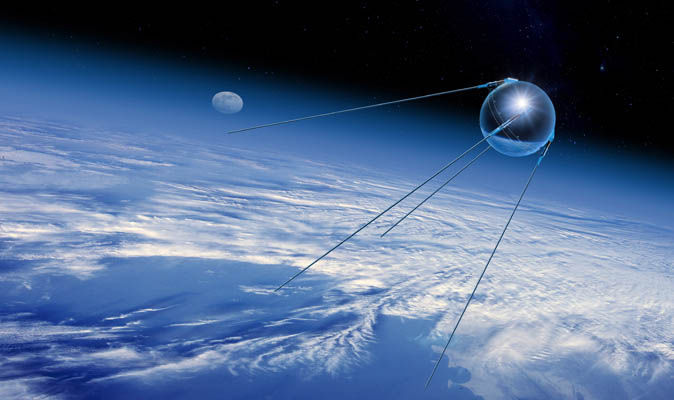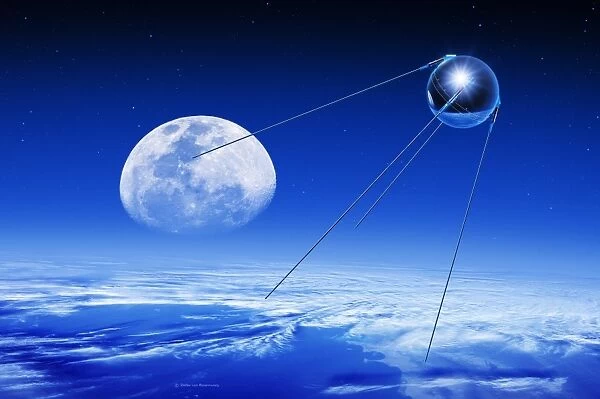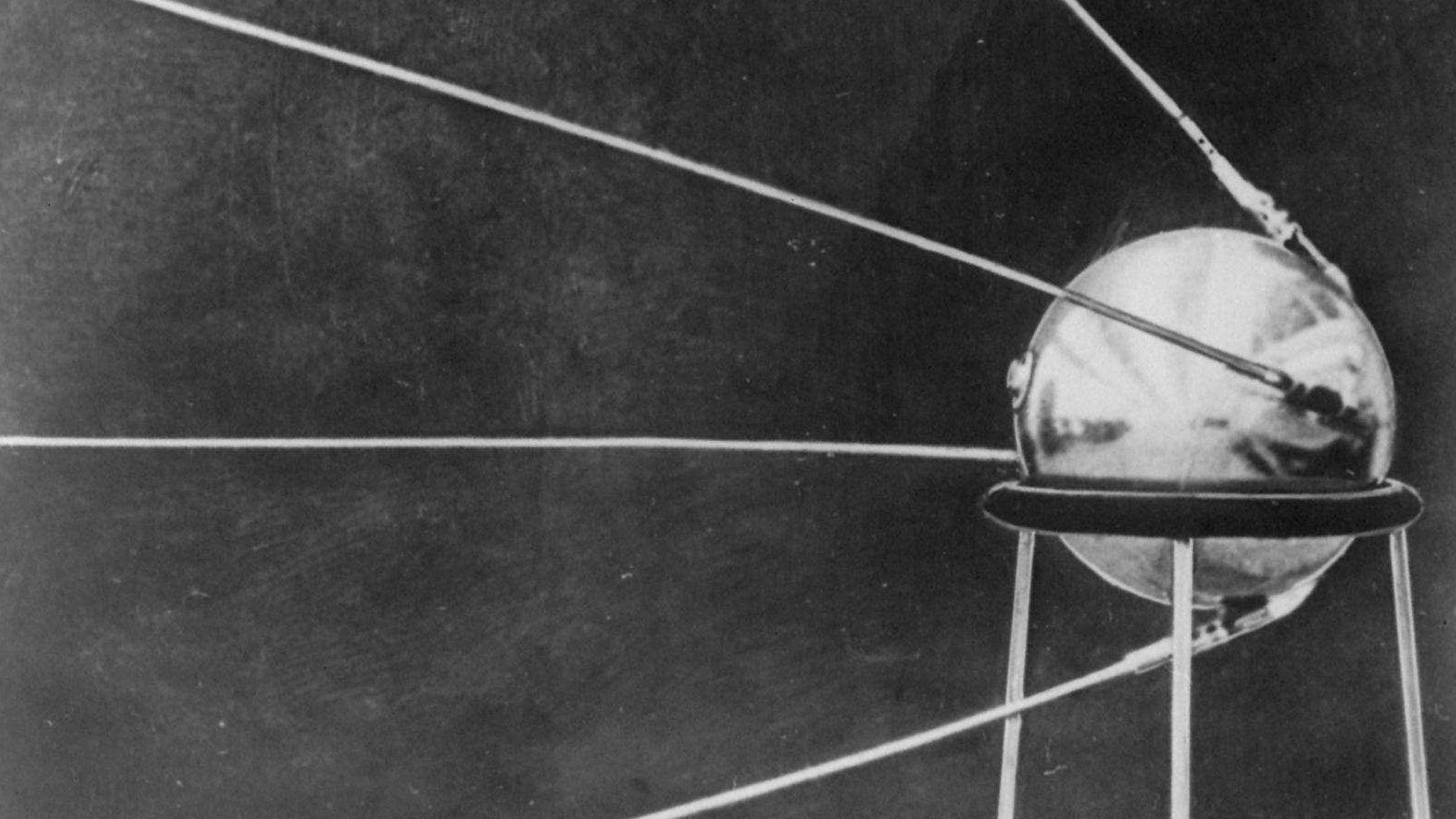In the annals of space exploration, one name stands out as the harbinger of a new era—Sputnik 1. Launched on October 4, 1957, by the Soviet Union, Sputnik 1 marked humanity’s first venture into the cosmos, forever altering our understanding of space and setting the stage for a journey that would extend beyond Earth’s boundaries. stay with Spaceyv
The Birth of Sputnik 1
- Launched on October 4, 1957, by the Soviet Union.
- Propelled into orbit by a modified R-7 intercontinental ballistic missile.
- Sputnik 1 was a polished metal sphere with four external radio antennas.
- The successful launch marked humanity’s first artificial satellite in space.
- Orbiting Earth every 96.2 minutes, completing over 1,400 orbits during its mission.
- The launch of Sputnik 1 transformed an ordinary satellite into a symbol of Soviet technological prowess.
- Its radio transmitter transmitted radio pulses back to Earth.
- The radio signals allowed scientists and radio operators to accurately track its orbit.
- The launch of Sputnik 1 was a historic moment, setting the stage for the space age and space exploration.
Launch and Orbital Triumph:
Sputnik 1, a polished metal sphere with four external radio antennas, was propelled into orbit by a modified R-7 intercontinental ballistic missile. Its successful launch transformed an ordinary satellite into a symbol of Soviet technological prowess.
Historic Orbits:
Orbiting Earth every 96.2 minutes, Sputnik 1 heralded the age of artificial satellites, completing over 1,400 orbits before its radio transmitter batteries were depleted.

The Scientific Impact sputnik 1
Radio Beacon to Earth:
Sputnik 1 transmitted radio pulses, serving both practical and symbolic purposes. Its radio signals were detectable on Earth, allowing scientists and radio operators to track its orbit accurately.
Global Impact:
The beeping radio signals from Sputnik 1 were not merely technological; they resonated as a political and ideological statement. The successful launch had far-reaching consequences, intensifying the Cold War space race.
Read More:
The best telescope for viewing galaxies
The Legacy of Sputnik 1
Space Race Catalyst:
Sputnik 1 ignited the space race between the United States and the Soviet Union, propelling both nations into a fervent competition to achieve new milestones in space exploration.
Advancements in Technology:
The success of Sputnik 1 spurred advancements in satellite technology, paving the way for subsequent space missions and laying the foundation for the modern space age.

Sputnik’s Enduring Significance
Historical Marker:
Sputnik 1 remains a historical marker, signifying the moment humanity breached the confines of our planet, reaching out into the cosmic expanse.
Inspiration for Generations:
As the first artificial satellite, Sputnik 1 continues to inspire scientists, engineers, and dreamers worldwide, reminding us of the limitless possibilities that lie beyond our earthly confines.
FAQ About Sputnik 1
Q1: What was the primary purpose of Sputnik 1?
- A: Sputnik 1 served as the world’s first artificial satellite, launched to orbit Earth and transmit radio signals back to the planet.
Q2: How long did Sputnik 1 remain in orbit?
- A: Sputnik 1 completed over 1,400 orbits around Earth before its radio transmitter batteries were depleted.
Q3: Why was the launch of Sputnik 1 significant?
- A: The launch of Sputnik 1 marked the beginning of the space age, signifying humanity’s ability to launch artificial objects into space and igniting the space race between the United States and the Soviet Union.
Q4: How did Sputnik 1 impact the Cold War?
- A: Sputnik 1 intensified the Cold War space race, becoming a symbol of Soviet technological prowess and prompting increased efforts by the United States to catch up in space exploration.
Q5: What technology did Sputnik 1 use for radio transmission?
- A: Sputnik 1 transmitted radio pulses using a simple radio transmitter, and its beeping signals were detectable on Earth.
Q6: What was the shape and structure of Sputnik 1?
- A: Sputnik 1 was a polished metal sphere with a diameter of about 58 centimeters (23 inches) and had four external radio antennas.
Q7: How did the launch of Sputnik 1 impact subsequent space missions?
- A: The success of Sputnik 1 spurred advancements in satellite technology and paved the way for subsequent space missions, influencing the trajectory of the modern space age.
Q8: What is the enduring significance of Sputnik 1?
- A: Sputnik 1 remains a historical marker, symbolizing the moment humanity ventured beyond Earth’s confines and continues to inspire generations in the pursuit of space exploration.
In the grand tapestry of space exploration, Sputnik 1 remains a symbol of audacity and discovery. Its legacy endures in the orbital pathways traced by countless satellites and spacecraft, each one a testament to the spark ignited by a simple beeping sphere that once circled our planet, daring us to look upward and reach for the stars. thanks for staying with Spaceyv.
Sources
1. NASA – National Aeronautics and Space Administration:
– NASA’s Sputnik and The Dawn of the Space Age
2. Encyclopaedia Britannica:
– [Sputnik 1 – Britannica]
3. Smithsonian National Air and Space Museum:
– Sputnik 1: The Satellite that Started the Space Age



